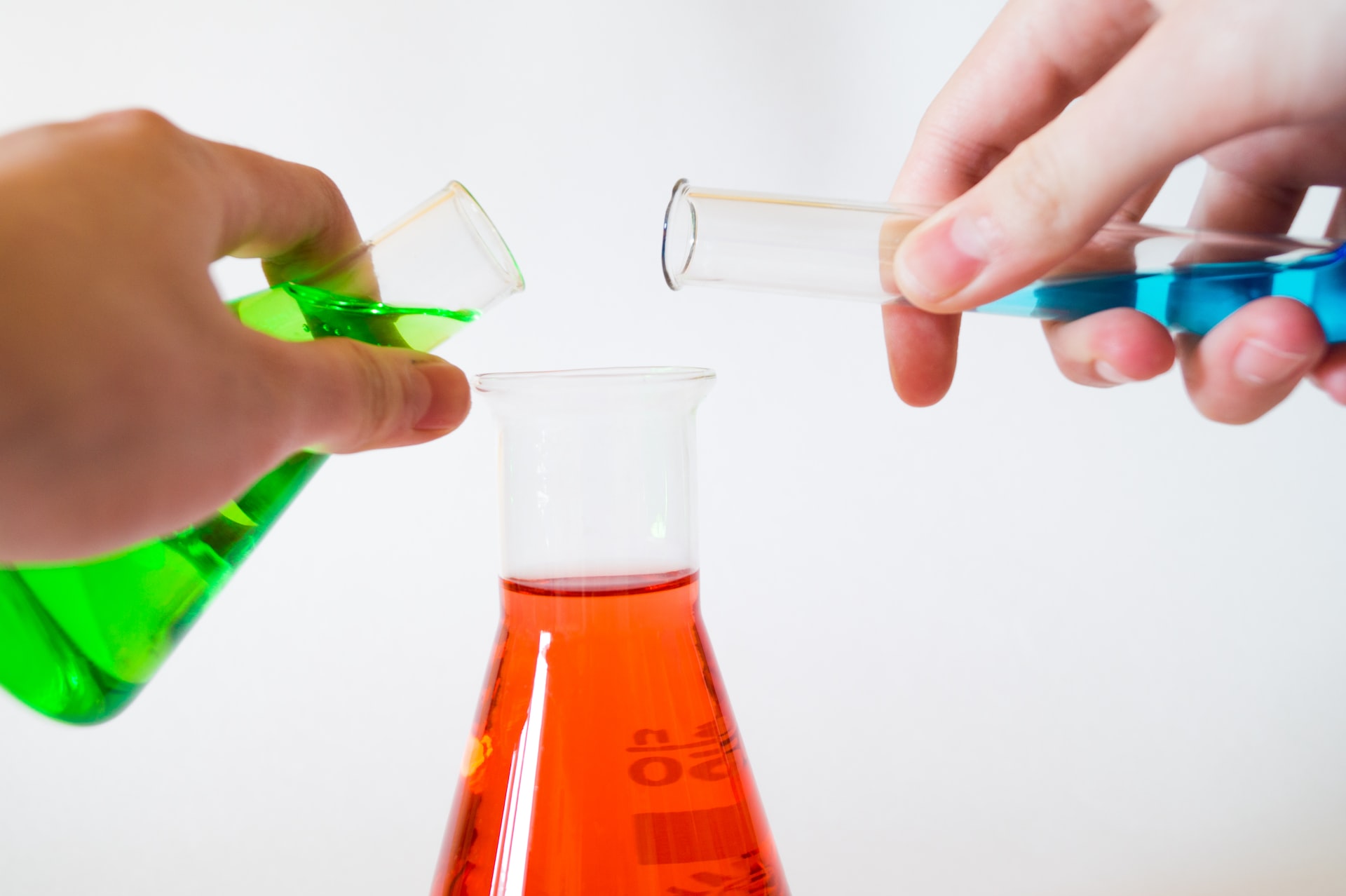



If you hear the phrase “chemical reaction,” you probably flash back to your high school chemistry class — beakers, test tubes and bottles of chemicals all over the classroom — but we experience chemical reactions every day. Let’s take a look at six of the most common types of chemical reactions and where you might see them in your daily life.
This reaction is easily one of the most common, and one you will probably encounter most often in your daily life.
It’s pretty simple: A + B → C.
Bread plus deli meat equals a sandwich. Hot water plus a teabag equals a delicious cup of tea. White vinegar plus baking soda equals a nifty little volcano.
On a chemical level, the design is the same, even if the formula looks a little bit different. Two atoms of sodium — a very reactive metal — and one atom of a toxic gas called chlorine combine to create sodium chloride — also known as table salt, which you probably have in your kitchen right now.
Not all combinations are that simple, and they don’t always create something, so if you’re mixing chemicals, it’s vital to be careful in case of an unexpected outcome.
If you’ve got a compost pile in your yard, you’ve got a decomposition reaction going every day. Decomposition, at its simplest, is when things break down. Dead plants and animals decompose. Molecules can even decompose under certain circumstances.
The formula is the opposite of the combination one: C →A + B.
Matt Damon’s character in the movie The Martian demonstrated a simplified decomposition reaction when he broke down stored hydrazine — a rocket fuel — to create water. He ran the hydrazine through a substrate to separate it into ammonia, hydrogen gas and nitrogen gas. From there, he burned the hydrogen to create water, which he used to care for his potato crops.
While the chemical reaction doesn’t work exactly like that, it is an excellent example of a decomposition reaction.
Single-displacement reactions happen when one atom in a molecule switches places with another atom.
The formula looks something like this: A + BC → B + AC
In this reaction, the A switches places and B ends up alone. These reactions are also a type of redox reaction, which we’ll discuss more in a little bit.
You’ll mostly see this type of reaction when you put metals in acid. Adding magnesium to hydrochloric acid will cause the chlorine atoms to switch sides, leaving you with magnesium chloride and hydrogen gas. These kinds of reactions can be hazardous, as hydrogen gas is extremely flammable and can easily ignite.
If single displacement is one atom changing sides in a reaction, double displacement takes it to a whole new level. Two complex molecules will each switch one of their atoms, creating two entirely new compounds. Just like with the single-displacement reaction, most of these reactions will happen in an acid or another caustic chemical.
This formula gets a little weird, but at its base, it breaks down to AB + CD → CB + AD.
The D and B switched places, creating two new molecules. There are three different types of double-displacement reactions:
These types of chemical reactions are probably the most fun. You get to light stuff on fire — what is more entertaining than that? Combustion reactions take place when any compound that contains carbon and hydrogen reacts with oxygen to create heat, carbon dioxide and water vapor.
C₆H₁₂ + 9 O₂ → 6 CO₂ + 6 H₂O
In this example, burning cyclohexane, a molecule present in crude oil, produces 6 carbon dioxide molecules and 6 water molecules.
If you drive a traditional gas-powered vehicle, you use a combustion reaction every time you get behind the wheel. Gasoline engines rely on a combustion reaction to generate the power necessary to move thousands of pounds of steel, glass and passengers forward. Striking a match or lighting a candle are both forms of combustion reactions. Any time you see fire or something burning, you’ve got this type of reaction.
Redox reactions are a little strange. These chemical reactions in which the oxidation state of the atoms changes. In a redox reaction, electrons are transferred from one reactant to the other.
Combination reactions and combustion reactions can also be redox reactions.
Rust, the oxidation of iron to create iron oxide, is one example of a redox reaction. Combustion reactions are also an example of redox reactions — during a wood fire, the carbon in the wood loses electrons, and the oxygen in the air gains some.
Now that you know what types of chemical reactions there are, how can you tell the different reactions apart? Here are some simple questions you can ask to help you figure out which kind of reaction you’re dealing with.
Do simple molecules become complex ones? You’ve got a combination, or synthesis, reaction.
Do complex molecules become simple ones? You’ve got the opposite of a combination reaction — decomposition.
Does the reaction involve fire, or contain oxygen, carbon dioxide and water? Combustion!
Do two things react to create different things? You’ve got double displacement on your hands.
Do two things react to create one new thing and one unbonded element? You’ve got a single-displacement reaction.
Does your reaction involve oxidation? It’s a redox reaction.
Chemical reactions might seem complicated, but chemistry is part of our daily lives. Even if you’re not pursuing a career as a chemist, knowing some chemistry basics can come in handy!
Featured Image Source: Designed by Pressfoto


This site uses Akismet to reduce spam. Learn how your comment data is processed.